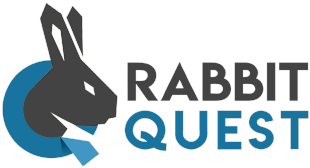How health apps create a true culture of employee vitality with wellness warriors
In today's fast-paced and demanding work environment, promoting employee vitality has become a top priority for organizations seeking to enhance well-being and productivity. Health apps can be a powerful tool in creating a culture of vitality, empowering employees to take charge of their health and well-being while fostering a supportive and engaged workplace community. In this blog post, we'll explore how incorporating health apps into your workplace wellness initiatives can transform everthing
Time to read: 5 minutes
1. Personalization
One of the key benefits of health apps is their ability to provide personalized health and wellness guidance to users. By offering customized recommendations based on individual needs, preferences, and goals, health apps can help employees make more informed decisions about their well-being and take steps to improve their overall health. This personalized approach ensures that your organization's wellness initiatives resonate with a diverse workforce, leading to higher engagement and more significant health improvements.
2. Gamification
Health apps often incorporate gamification features, such as goal-setting, progress tracking, and rewards systems, to motivate users and make health and wellness more enjoyable. By turning healthy habits into a fun and engaging experience, health apps can inspire employees to take an active role in their well-being and strive for continuous improvement. This gamified approach can foster healthy competition and connection among employees, driving a culture of vitality in the workplace.
3. Social support
Many health apps include social features that enable users to connect with colleagues, friends, and family members for support and encouragement. By creating a network of wellness warriors within your organization, employees can share their successes, challenges, and tips for maintaining a healthy lifestyle. This sense of community and accountability can be a powerful motivator, helping employees stay on track with their wellness goals and inspiring others to join the movement.
4. Data-driven insights
Health apps can provide valuable data on employee health and well-being, giving HR managers and organizational leaders the information they need to tailor wellness initiatives more effectively. By analyzing trends and patterns in employee health data, organizations can identify areas for improvement and develop targeted interventions that address the unique needs of their workforce.
5. Seamless integration
Health apps can be easily integrated into existing workplace wellness programs, providing a user-friendly platform for employees to access resources, track their progress, and stay engaged with their health goals. By centralizing wellness initiatives within a single app, organizations can create a more cohesive and consistent approach to employee health and well-being, making it easier for employees to adopt and maintain healthy habits.
By incorporating health apps into your workplace wellness strategy, you can empower your employees to take charge of their health and well-being, transforming them into true wellness warriors who actively contribute to a culture of vitality. As employees embrace healthier habits, share their experiences, and support one another in their wellness journey, your organization will reap the benefits of improved employee health, increased productivity, and higher overall job satisfaction.




